Molecular clouds

Stars & Planets (week 1)
Literature: Schulz, chapter 4
(see also: slides and videos by Troels Haugbølle from last year)
Michael Küffmeier
kueffmeier@nbi.ku.dk
Niels Bohr Institute
for the "real" slides, go here:
https://slides.com/kuffmeier/molecular-clouds
Recap questions
Why do the warmer phases of the interstellar medium have more blueshifted spectra compared to the colder phases?
Warmer regions have lower densities. The spectra are dominated by high-energy transitions, which causes more signal at smaller wavelengths (i.e., higher frequencies). Colder regions are denser and therefore more extinct. Light cannot easily pass through. Their spectra are dominated by lower-energy transitions, and thereby more signal at longer wavelengths.
Recap questions
Why do cooling and heating scale differently with density?
Cooling: atoms/molecules collide with electrons from the same region.
Heating: atoms/molecules are hit by external photons/atoms.


Recap questions
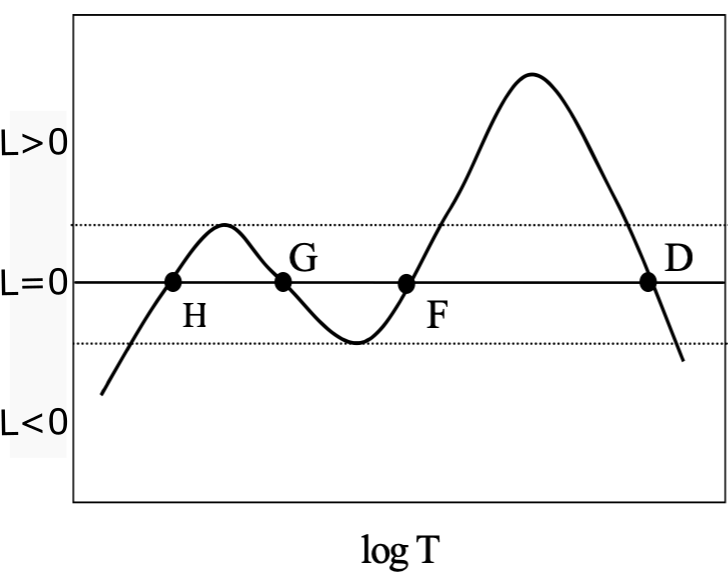
What are the stable equilibrium points and why?
cooling
heating
Cooling and heating have to be in balance. All marked points (H, G, F, D) fulfil that. However, only points with
are stable.
Consider a slight perturbation towards higher T on the curve. If we move toward higher temperatures from H, cooling dominates (L>0) and the system returns to point H.
Moving to higher temperatures from G and D, leads to more heating (L<0), and therefore runaway processes.
Molecular clouds

Molecular clouds
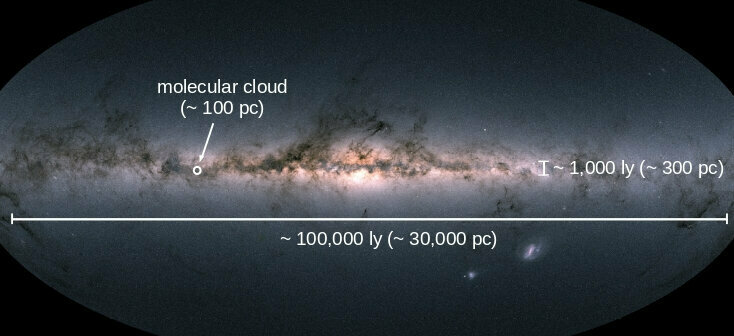
Molecular clouds only cover a tiny fraction of the volume
Molecular clouds
Molecular gas and dust

- stars form in such molecular clouds
- molecular clouds are the densest component of the ISM
Milky Way: Filling factor: <1 %, mass ~
- consist of various molecules, but mostly molecular hydrogen
How do we know the mass?

Molecular clouds
Molecular gas and dust

Milky Way: Filling factor: <1 %, mass ~
- consist of various molecules, but mostly molecular hydrogen
How do we know the mass?

Molecular hydrogen lacks dipole moment.
Its lowest energy transition occurs at > 500 K. T=10 K in molecular clouds. Too low!
Ideas?

Molecular clouds
CO is the second most abundant molecule in molecular clouds ...
... and it has dipole moments with low-energy transitions of
5 K < T < a few 100 K.

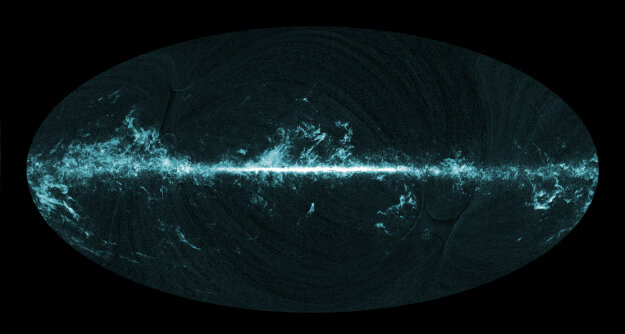
Molecular cloud survey CO J=??? (telescope: PLANCK)
Molecular gas and dust
CO J=1->0: 5.5 K
CO J=2->1: 11 K
CO J=8->7: 185 K
Which transition is it?
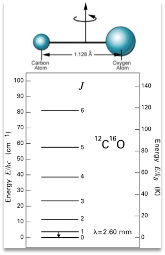
Molecular clouds
Molecular gas and dust
Milky Way: Filling factor: <1 %, mass ~
- consist of various molecules, but mostly molecular hydrogen

- measurements of CO yield mass if CO-to-H mass-ratio is known
2

(see Schulz p. 53)
- also possible to observe other molecules and get a more complete and comprehensive picture
Molecular clouds
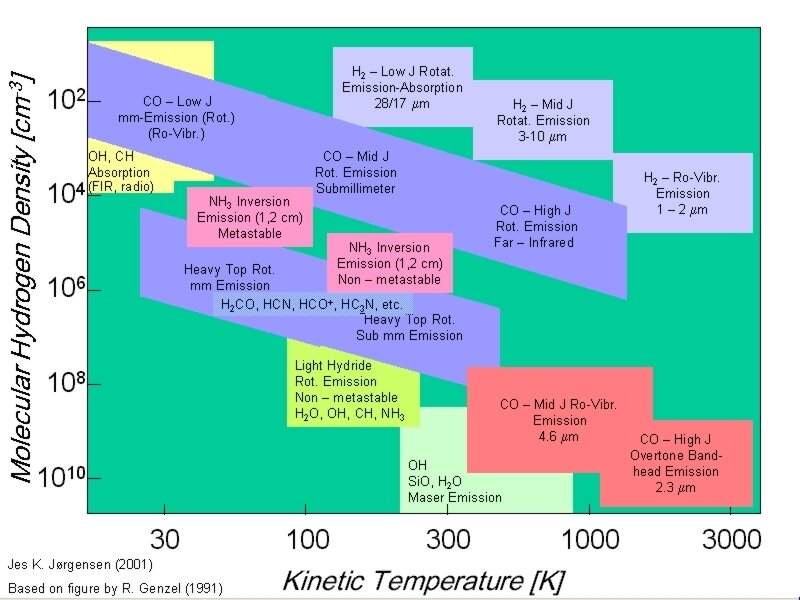
Molecular clouds
Categorisation
dynamical entities and dominated by supersonic turbulence
From large to small
- Molecular cores (<0.1 pc), gravitationally unstable and precursors of (proto)stars
- Giant molecular clouds (~30 to 100 pc), 10 to 10 M
4
6
sun
- Molecular clumps (~1 pc), ~100 M
sun
- Molecular clouds (~5 to 10 pc), 10 to 10 M
sun
3
4
- (diffuse clouds; only <25 % H )
2
Molecular clouds
Hierarchy
Larson's relations
dynamical, dominated by supersonic turbulence, and approx. isothermal at ~10 K (balance cosmic-ray heating and dust cooling)

Reading recommendation! https://astrobites.org/2012/11/18/astrophysical-classics-larsons-laws/
based on data by Heyer et al. 2004
Molecular clouds
Virial theorem
kinetic energy
moment of inertia
thermal energy
gravitational energy
magnetic energy
in principle only valid for isolated system
NO energy conservation in molecular clouds! Radiation keeps clouds at ~10 K despite plenty of shocks (conversion of kinetic to thermal energy)
...but "fresh" supply from larger scales yields statistical balance
Molecular clouds
Virial theorem
kinetic energy
moment of inertia
thermal energy
gravitational energy
magnetic energy
for a typical molecular cloud:
virial number indicates how easy a system collapses
Molecular clouds
Virial theorem
What happens?
kinetic energy dominates, cloud disperses
gravitational energy dominates, cloud collapses
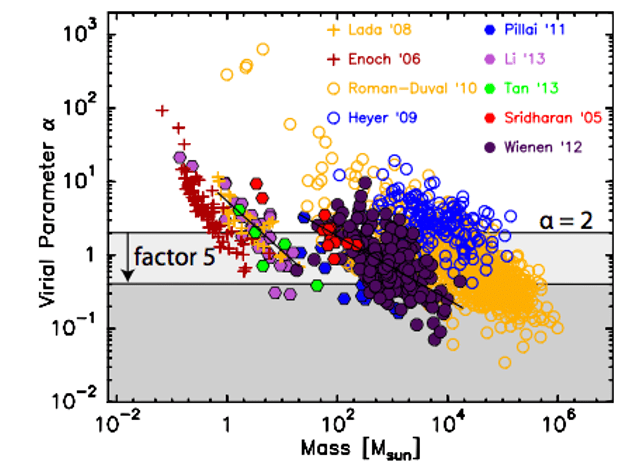
Molecular clouds
Virial theorem

Molecular cloud lifetimes are determined by dynamical time
computable using Larson's velocity-size relation
for
gravity timescale is free-fall time
:
Molecular clouds
dynamical entities
Padon et al. 2017